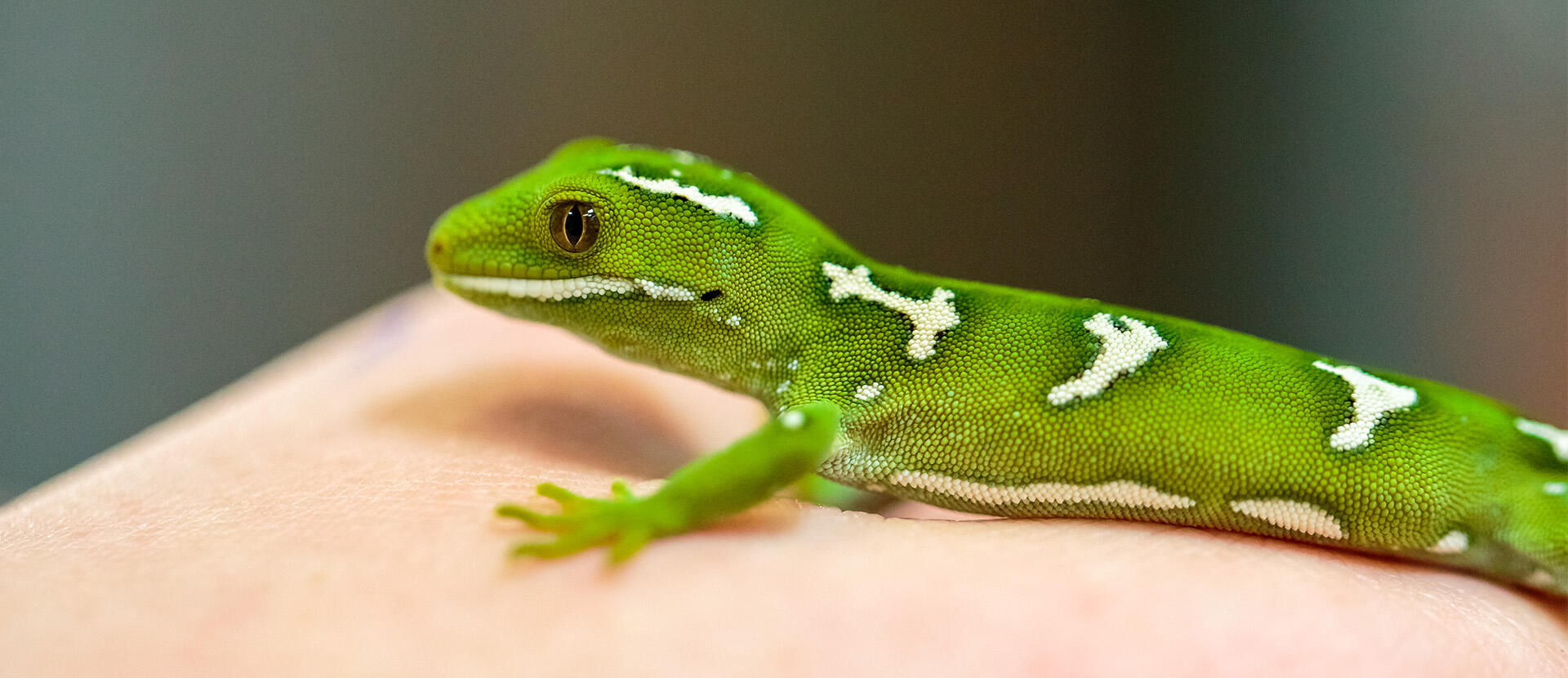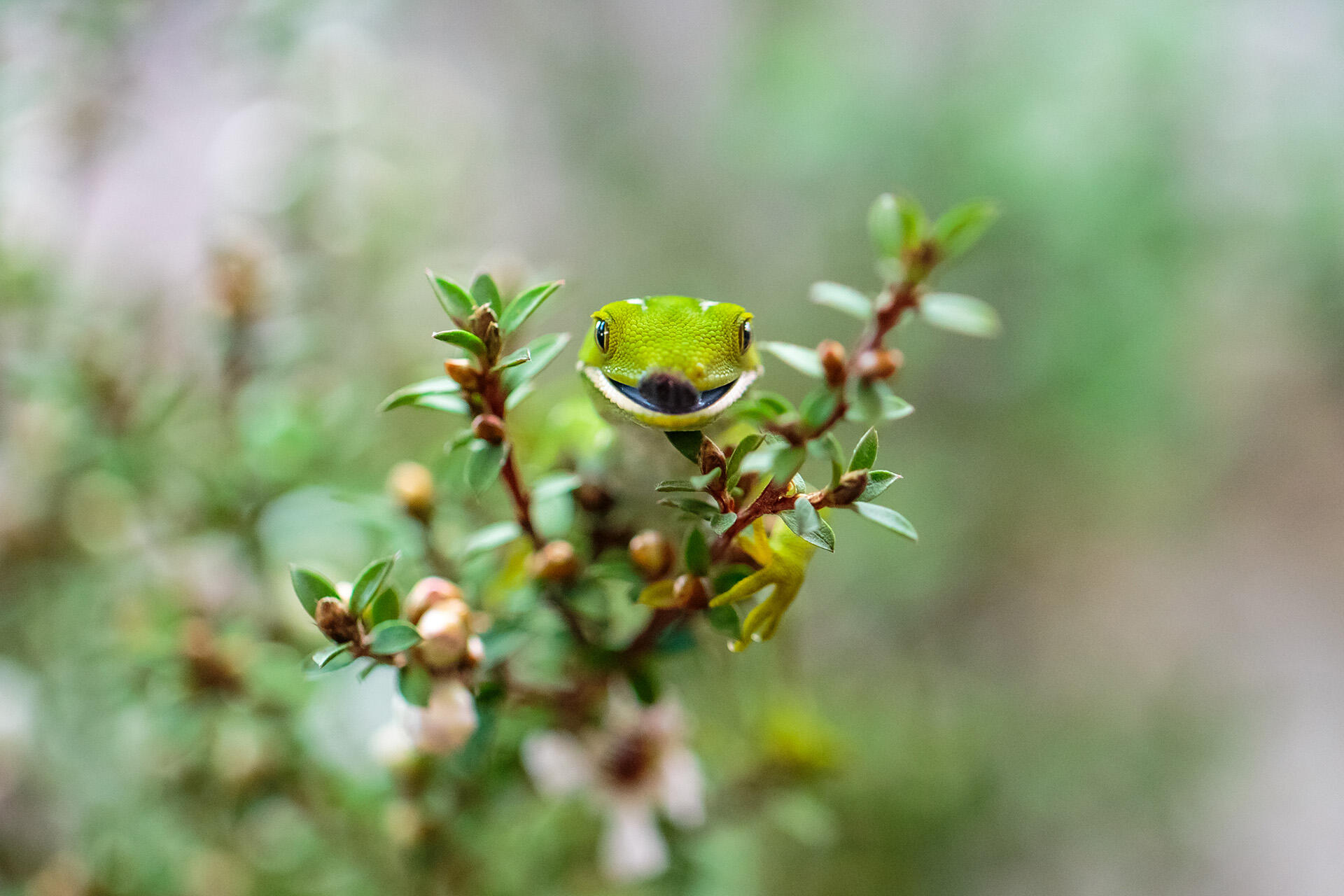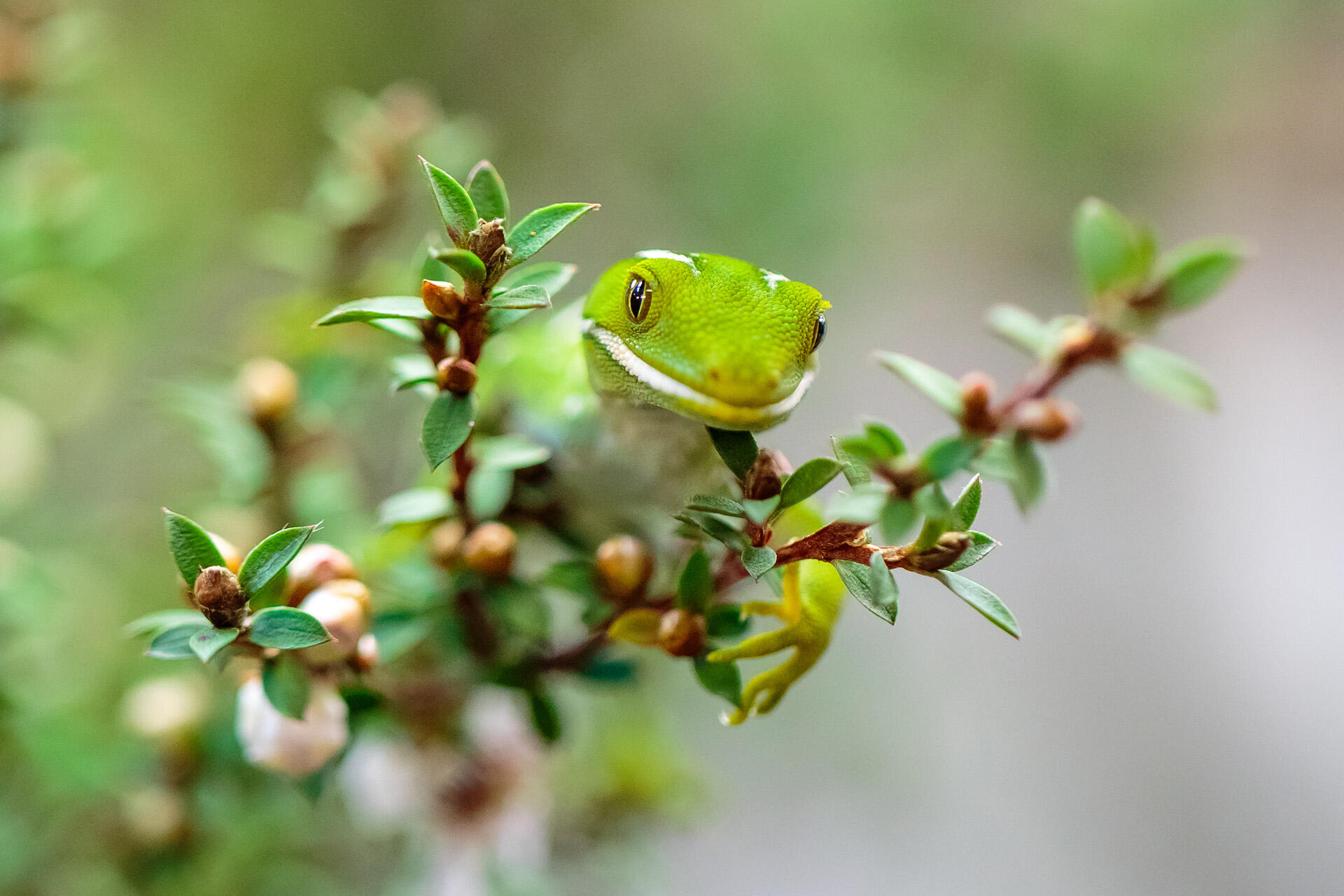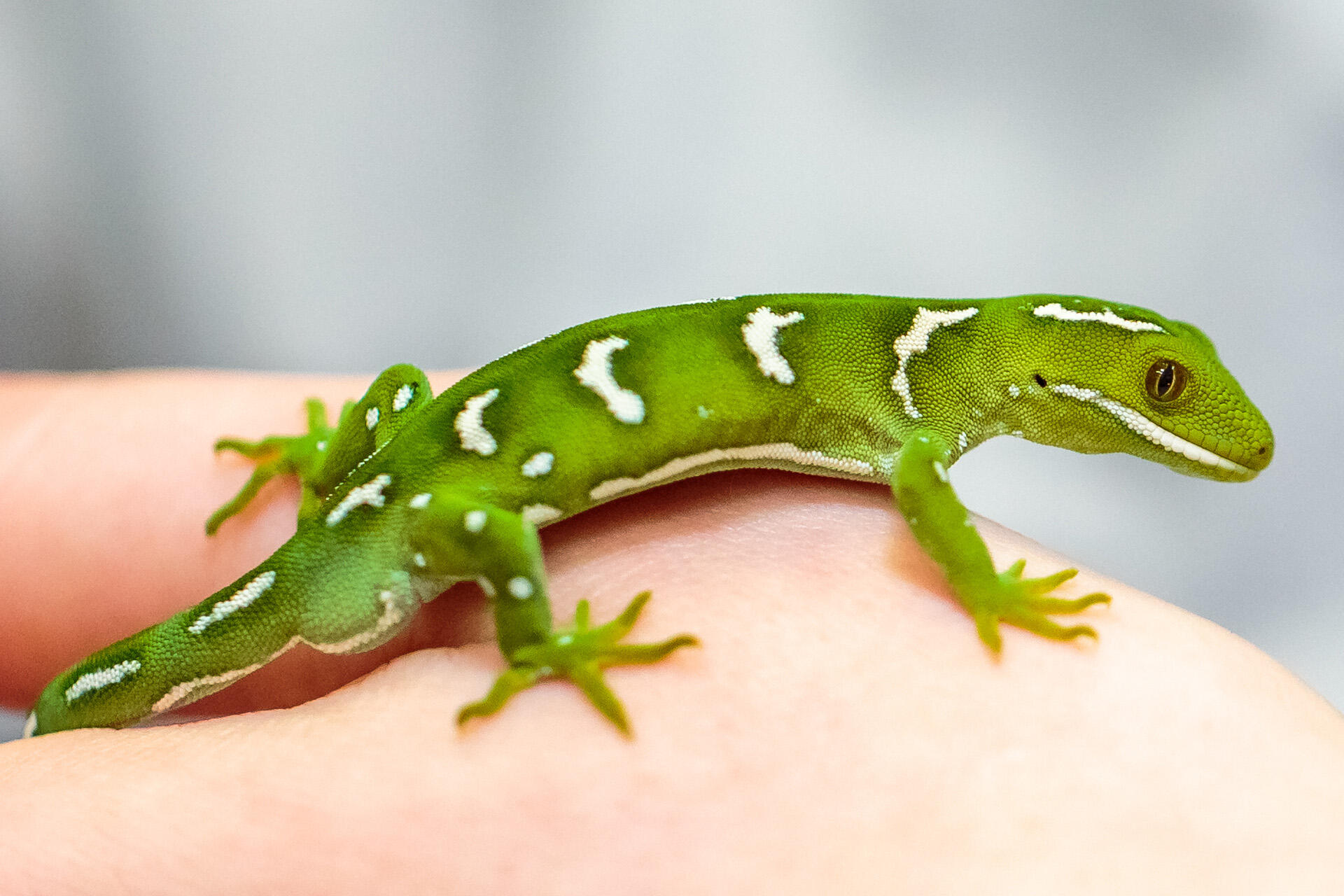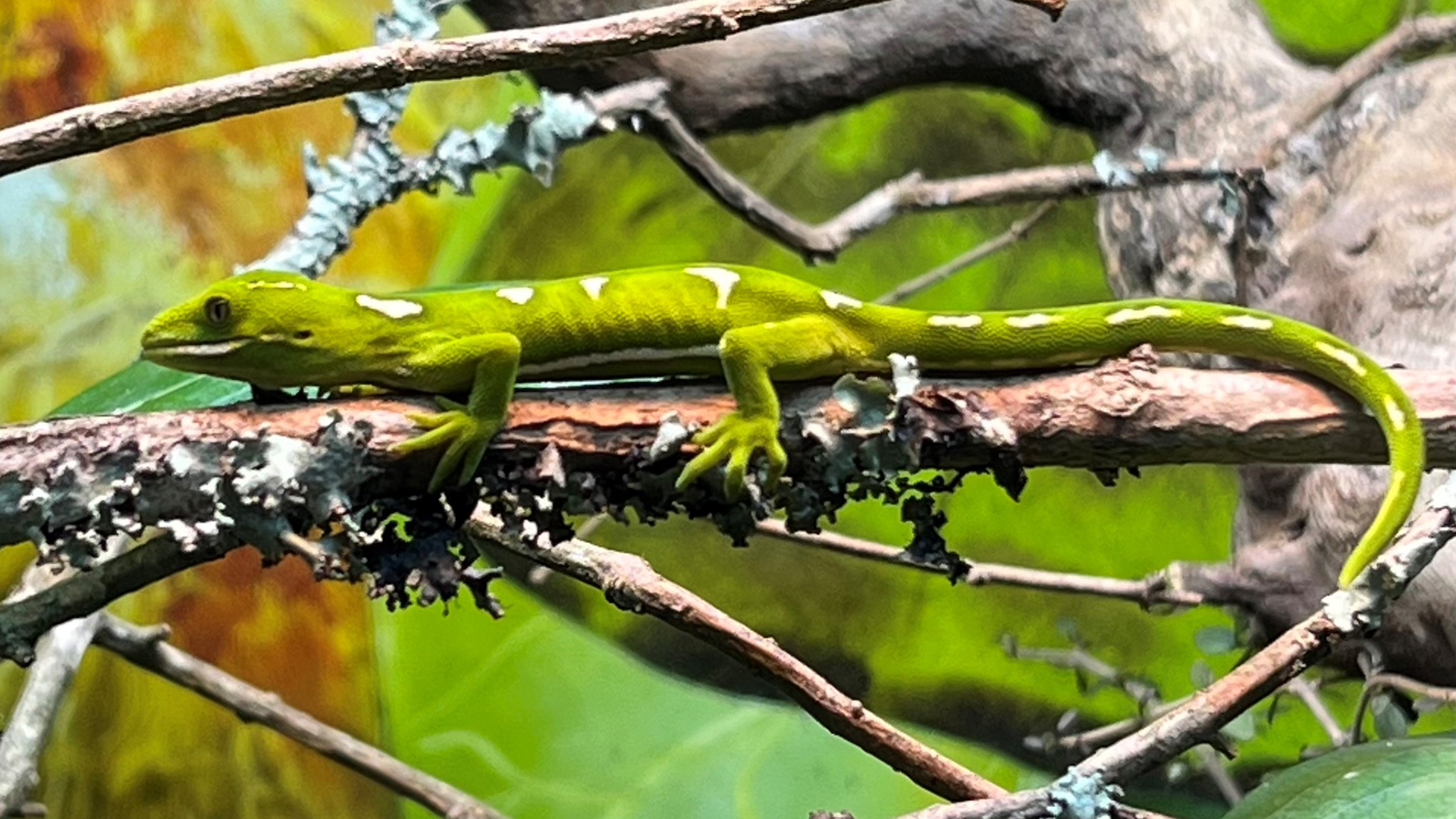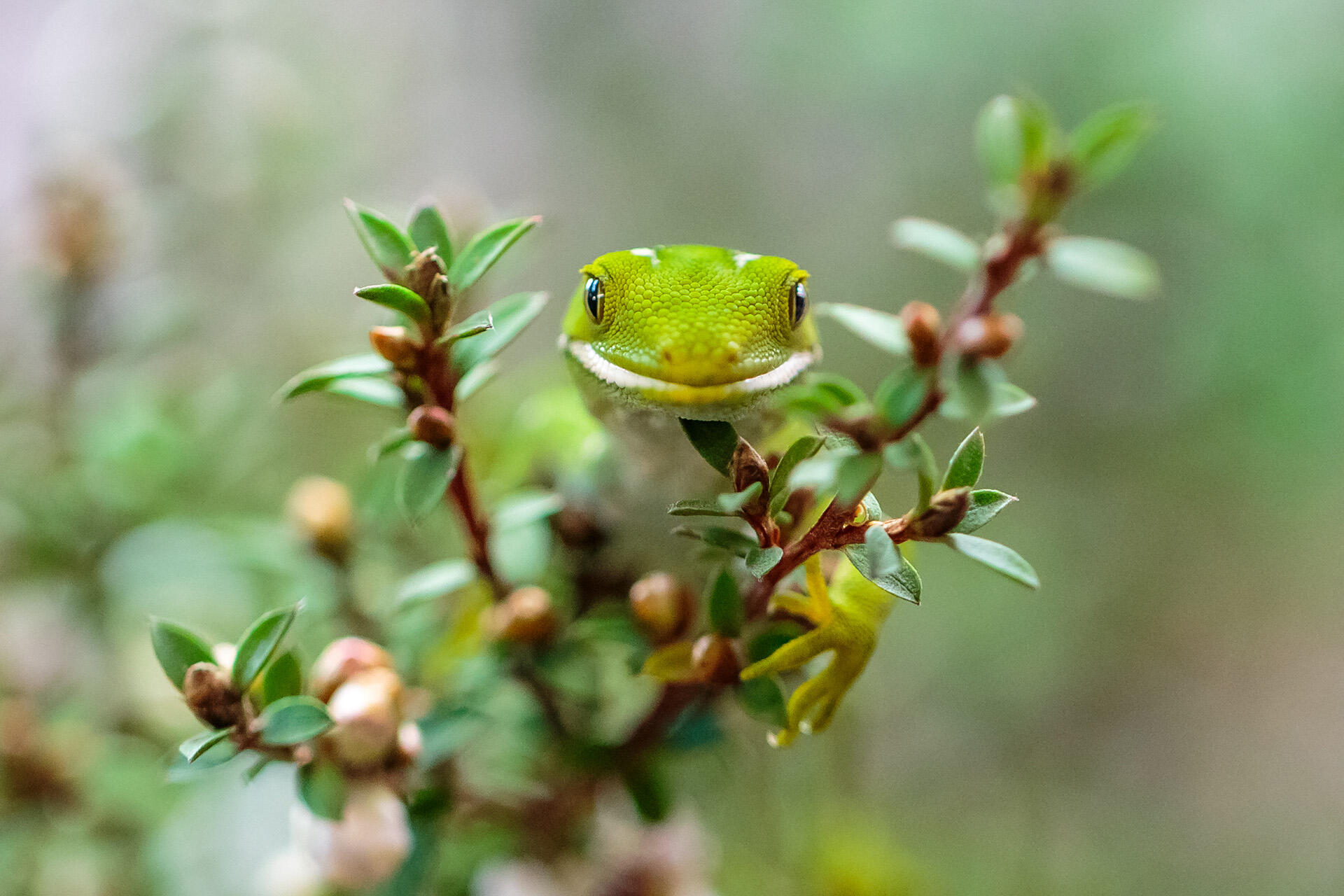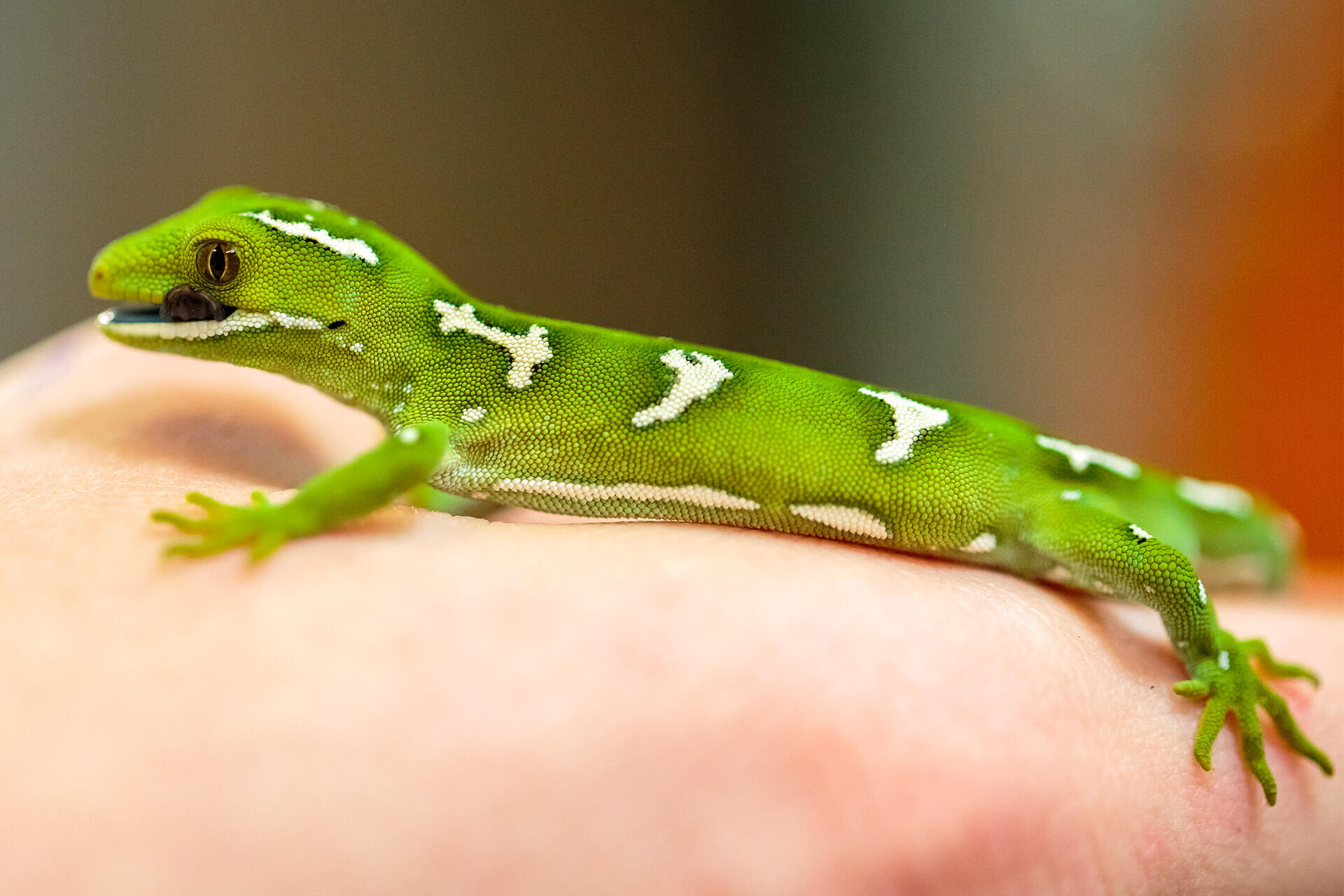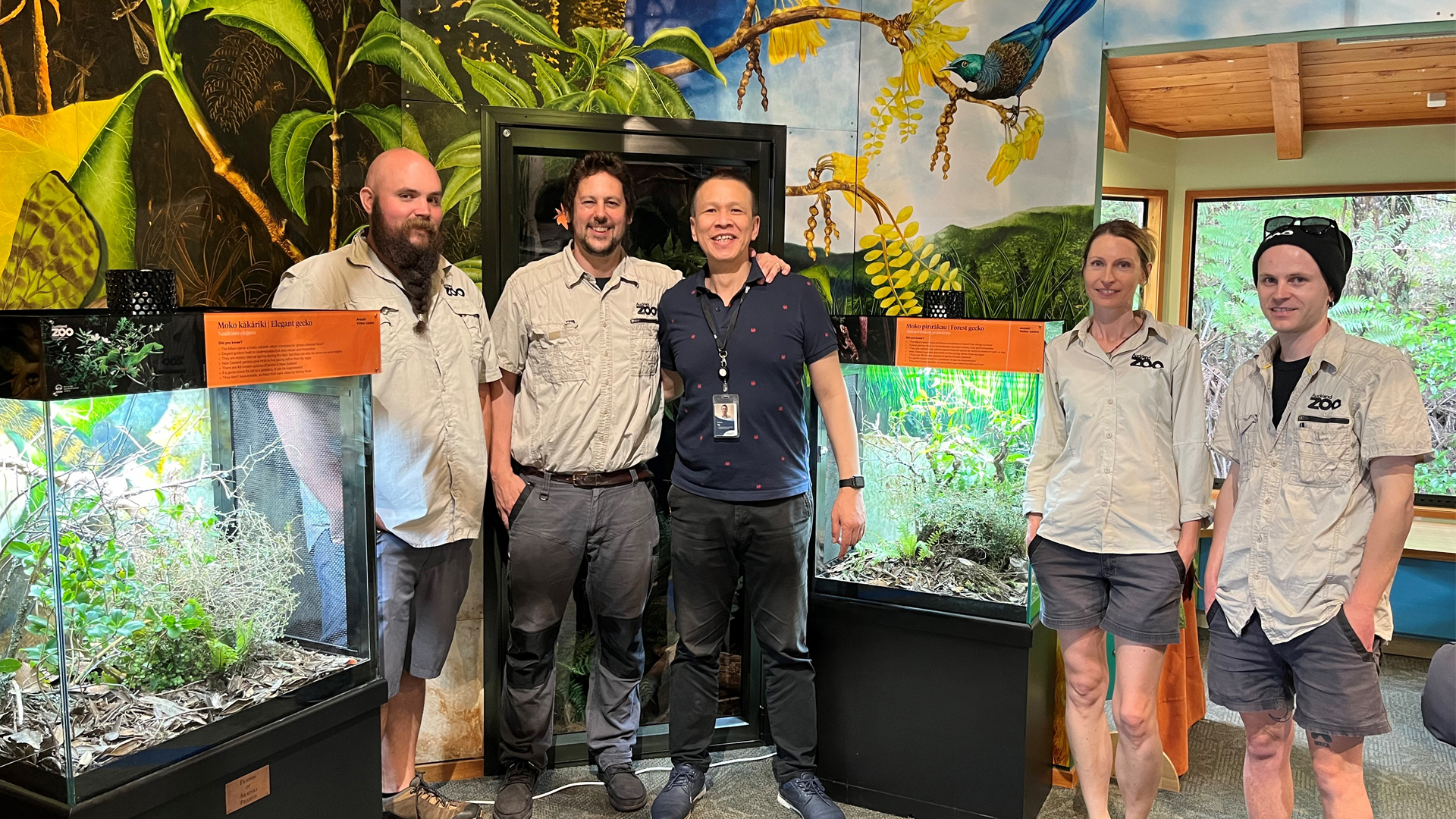The elegant gecko (Naultinus elegans) or moko kākāriki, is an arboreal (tree dwelling) species. Their prehensile tail aids them in climbing trees and shrubs, such as native mānuka and kānuka plants.
There are three similar species of Naultinus North Island gecko - N. punctatus, N. grayii and N. flavirictus. The easiest way to tell them apart is by looking at their tongues - only Naultinus elegans have a dark blue tongue and mouth.
Geckos play a critical role in our native ecosystem as pollinators for native plants. They also disperse native plant seeds by eating their fruit.
New year, new skin
Like all lizards, moko kākāriki regularly shed their skin as they grow. This happens because their skin is made from keratin – the same material found in our nails and hair. Keratin makes their skin more rigid, and it isn’t able to stretch as the gecko grows.
You can spot when a gecko is getting ready to shed as its vibrant green skin lightens and eventually turns white. This is caused by the old skin separating from the new skin growing underneath, becoming a protective sheath. Once the gecko is ready, it will wriggle its way out of the old skin. Geckos can spend a lot of energy each time they shed, so many get a quick boost by eating the skin they’ve just shed!
I spy with my big eyes
It can be easy to get geckos and skinks confused if you don’t know what sets them apart. Aside from their colouration, here are some common traits to look for if you spot one in the wild.
The head is the best place to start. Geckos have large, bulging eyes, with clear eyelids that they will lick to keep clean and moist. The eyes of a skink are smaller and lidded. Beyond the head, a gecko’s body narrows at the neck (like you and me!) while skink bodies are roughly the same width down to the base of their tail. Gecko skin looks loose and velvety, while skinks look sleeker and shinier.
Physical differences aside, you may find geckos in more places than skinks. They have a great climbing ability and can ‘adhere’ to surfaces, even walking upside down! Skinks prefer to stay on the ground but can be agile climbers if needed.


